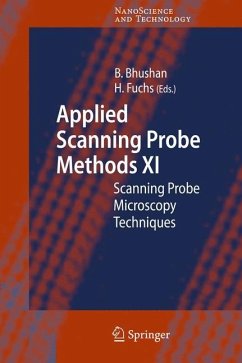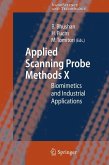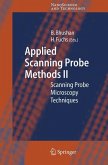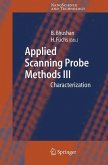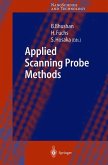The ability to accurately and reproducibly measure the properties and perf- mance characteristics of nanoscale materials, devices, and systems is a critical enabler for progress in fundamental nanoscience, in the design of new nanoma- rials, and ultimately in manufacturing new nanoscale products [1]. This quotation from the US National Nanotechnology Initiative emphasizes the need for measu- ment tools in emerging nanomaterial applications, a eld predicted to generate a multibillion-dollar market within 10 years. One speci c measurement need is for nanomechanical information knowledge on the nanoscale of mechanical prop- ties such as elastic modulus, adhesion, and friction. Accurate information is essential not only to predict the performance of a system before use, but also to evaluate its reliability during or after use. The measurement need is motivated partly by the fact that new applications often involve structures with nanoscale dimensions (e. g. , nanoelectromechanical systems, nanoimprint lithography). Measurements of such structures by necessity must provide nanoscale spatial resolution. Other new structures have larger overall dimensions, but integrate disparate materials on the micro- or nanoscale (e. g. , electronic interconnect, nanocomposites). In such cases, nanoscale information is needed in order to differentiate the properties of the various components. Many methods to measure small-scale mechanical properties have been devised, including ones based on indentation [2 4], on ultrasonics [5,6], and on other phy- cal phenomena [7,8]. Such methods often have drawbacks: they are not suf ciently quantitative, are limited to specialized geometries, and so forth.
From the reviews:
"Vol. XI contains contributions about recent developments in scanning probe microscopy techniques. ... The editors and their talented authors have been among the leaders in the study of probe methods. ... Each chapter captures both the excitement and the importance of the work and conclusions reported, and will make profitable reading for researchers at all experience levels. ... All the chapters are supported by extensive lists of references and beautifully illustrated and in color too, also along with graphs, equations etc." (Current Engineering Practice, 2009)
"The articles ... are written in sufficient detail, so that university students, researchers and engineers can understand the physics of the instruments, the design and construction of the devices and the cantilevers, the signal processing algorithms, and their use in imaging and the surface characterization of the specimens. ... SPM includes a variety of techniques, including scanning near-field optical microscopy, which has interesting applications ... . well-written and clearly illustrated. ... contain ample experimental data and significant discussion of limitations and artifacts." (Barry R. Masters, Optics & Photonics News, September, 2009)
"Vol. XI contains contributions about recent developments in scanning probe microscopy techniques. ... The editors and their talented authors have been among the leaders in the study of probe methods. ... Each chapter captures both the excitement and the importance of the work and conclusions reported, and will make profitable reading for researchers at all experience levels. ... All the chapters are supported by extensive lists of references and beautifully illustrated and in color too, also along with graphs, equations etc." (Current Engineering Practice, 2009)
"The articles ... are written in sufficient detail, so that university students, researchers and engineers can understand the physics of the instruments, the design and construction of the devices and the cantilevers, the signal processing algorithms, and their use in imaging and the surface characterization of the specimens. ... SPM includes a variety of techniques, including scanning near-field optical microscopy, which has interesting applications ... . well-written and clearly illustrated. ... contain ample experimental data and significant discussion of limitations and artifacts." (Barry R. Masters, Optics & Photonics News, September, 2009)

